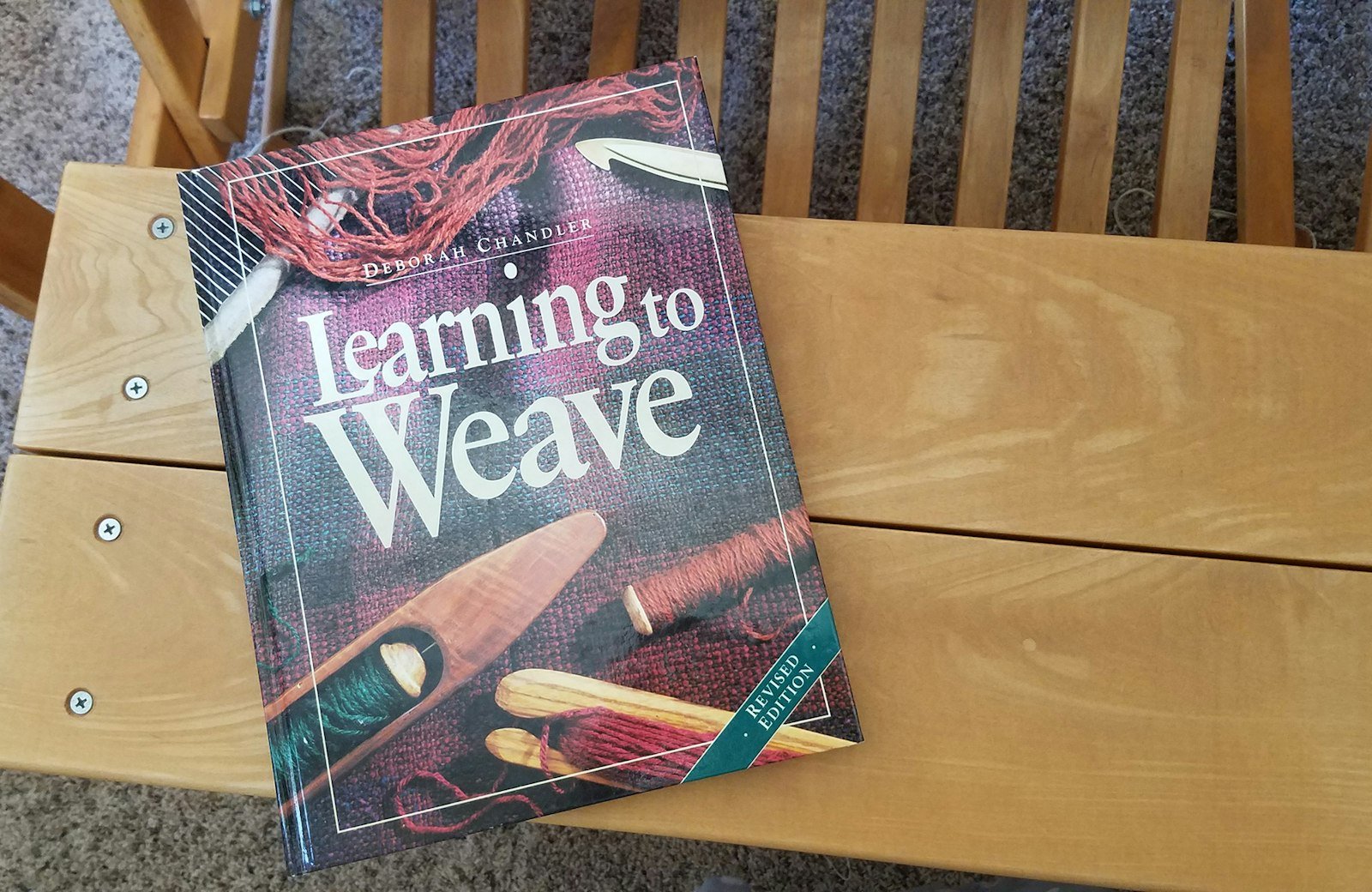Only a few books can boast what Learning to Weave can: In print for more than 40 years! An amazing accomplishment. But what is more remarkable is the enormous influence it has had, with 160,000 copies sold and who knows how many more checked out from the library or borrowed from a friend.
I had the unique (and humbling) position of being both Deborah Chandler’s student and her editor. I learned to weave from Deborah at the Weaving Shop in Boulder, Colorado. When I first walked into the shop, I was all set to buy a tapestry loom, but she said I should take a class first to see what kind of weaving I wanted to do. Sage advice: tapestry weaving wasn’t for me (at least then), but her shaft-loom weaving class got me hooked on floor-loom weaving. Later, when I realized I wanted to work in my passion, Deborah suggested I call Linda Ligon, publisher/editor/owner of Interweave Press, to see whether she had a job opening. Though I don’t know whether Linda really had an opening, and I was a beginning weaver who knew nothing about editing, Linda nevertheless hired me as an assistant. Eventually, under her steady tutelage, I became an editor ... and that led to editing Deborah’s book.
 The happy trio at a sheep-to-shawl event circa 1981. From the left, Deborah Chandler, Linda Ligon, and Jane Patrick. Photo courtesy of Jane Patrick.
The happy trio at a sheep-to-shawl event circa 1981. From the left, Deborah Chandler, Linda Ligon, and Jane Patrick. Photo courtesy of Jane Patrick.
I was an enthusiastic proponent of the idea of this book. I felt Deborah’s approachable writing voice and her deep knowledge of teaching weaving would bring this book to those who were eager to weave but didn’t have a teacher nearby. I also was confident that this book would make a good course guide for in-person classes (which it has). In 1977 or so, when I first started weaving, there were New Key to Weaving by Mary Black, Weaving: A Handbook for Fiber Craftsmen by Shirley Held, and The Art of Weaving by Else Regensteiner. These were all good resources. I felt, though, that what weavers really needed was a book where they could learn to weave step-by-step.
I always like to say that Learning to Weave is the next best thing to taking a class with Deborah. In fact, each chapter is called a lesson and pretty much follows Deborah’s beginning 4-shaft weaving class. If you work your way through this book, you will know a lot about weaving in the end, and you will be very comfortable warping because you’ll need to re-warp your loom for each of the 15 lessons. It is also a great resource to brush up on something you haven’t woven in a while. As a matter of fact, just a few weeks ago I reviewed lace weaves for a project I was designing. All I needed to know was there in Lesson 12.
Making a book, as you can see from the acknowledgements, is a community affair. Many of the samples were woven by Deborah’s students, enriching its content. In addition, many others’ special talents added to the book. The editor serves as a go-between for the reader and the author. The editor tries to make sure that the author’s intent and voice are maintained while at the same time being sure that it will be understandable to the reader. A reader advocate, if you will. Generally, a book begins with bits and pieces: manuscript, illustrations, items for photography. It is a collaboration that in the end you hope comes together to create something that is lasting and worthy and good. Deborah, I’m pretty sure Learning to Weave has achieved that.
 Deborah Chandler with Tim Hale at WARP (Weave a Real Peace) Annual Meeting, 2023. Photo by Cynthia Hale
Deborah Chandler with Tim Hale at WARP (Weave a Real Peace) Annual Meeting, 2023. Photo by Cynthia Hale
Editor's note: Maybe you are like me, and from time to time you still pull out this iconic beginning weaving book to use as a reference. I’d love to hear how it helped you when you were learning to weave and how you use it today. Please send your comments to [email protected]. ~ Susan

